Your online presence on foreign markets: the importance of an integrated strategy
Every marketer knows it, a visible online presence is crucial to achieving sustainable success at an international level. While knowledge is one thing, however, it is quite another to translate this into actionable steps that can create a prominent web presence in foreign markets. This is important across all sectors, especially those that are competitive by their nature.
Traditionally, businesses in competitive markets would first create optimized and multilingual websites. These websites would include information about the brand and its product / services. Operating alongside traditional advertising campaigns, this dual-purpose marketing strategy would target potential consumers on the local market and aim to convert them into sales. However, this approach, for most of the competitive markets, is no longer viable.
Many different aspects to take into account while developing a web presence on foreign markets
While the development of a standalone website campaign may drive business growth, it is not enough to gain full access of the market potential abroad. A multilingual website may provide information about your products, and services, but it does not provide any opportunity for real dialogue or interfacing.
In fact there many aspects of an international web presence marketing that can help businesses to actively target foreign customers customers while interacting with them in real-time, when they are engaged with the brand. A good online marketing strategy should strive to engage customers across multiple channels, including websites, social networks, emailing, digital advertising…
A multilingual website should be part an integrated strategy
Today, it is no longer a question of whether to globalize one’s web site, but how to improve the online experience for every foreign prospect and customer. In the internet age, an effective global web strategy is more than ever a strategic imperative. Here is the 3 step process we recommend to establish your online presence on foreign markets, and help your company succeed internationally.
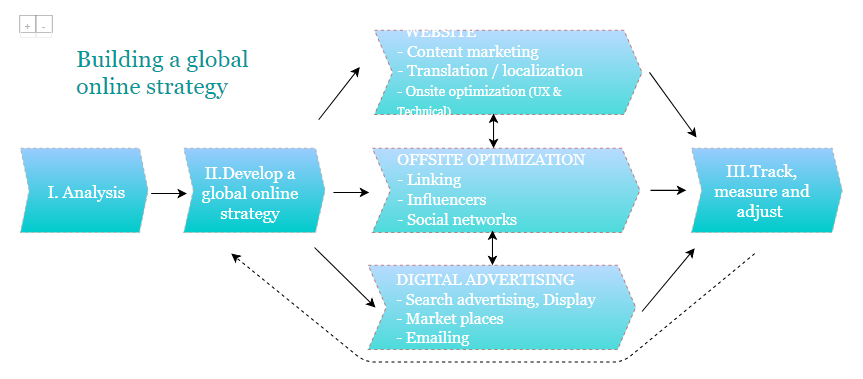
Use the latest technology
For instance, when localizing your content with a translation management system, you have the advantage of translation memories and term bases which can reduce the costs of your translations with minimal effort. It can help for terminology management.
The translation management systems are very useful because they become more robust in the long-run, decreasing the amount of content that needs to be translated, and reducing costs.
Let’s imagine we have an e-commerce company that sells lighting to the French market. We want now to target other European markets, and have made the decision to integrate a translation management system into our localization strategy.
Our web content has a lot of repeated text such as, “éclairage led,” ou, “disponible en différentes tailles.” With a TMS, we have access to a translation memory and glossary, in whicg we have included the keywords from our keyword research, and we don’t have to pay to translate these phrases over and over for every page of content. Once we have translated it the first time, these phrases will be stored in the database and will be automatically reused when they are detected, reducing significantly the cost of the translation carried out by an expert. This is a great example of how to use technology to expand abroad.
Of course, there are many aspects of our online activity that still have to be achieved with the help of native experts: adwords campaign, content marketing, social medias, but staying up to date can be of great help to expand internationaly.





 Due to the lack of local market attractiveness, most European companies are willing to expand overseas, not just to enter new markets but also to cut the risk of doing business locally. There are many opportunities for businesses to reap the benefits of selling abroad through the web, by fully meeting the needs of their foreign customers and offering them a great multilingual experience on their
Due to the lack of local market attractiveness, most European companies are willing to expand overseas, not just to enter new markets but also to cut the risk of doing business locally. There are many opportunities for businesses to reap the benefits of selling abroad through the web, by fully meeting the needs of their foreign customers and offering them a great multilingual experience on their 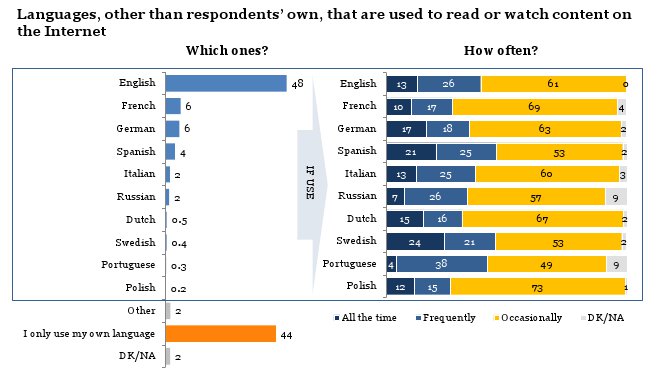
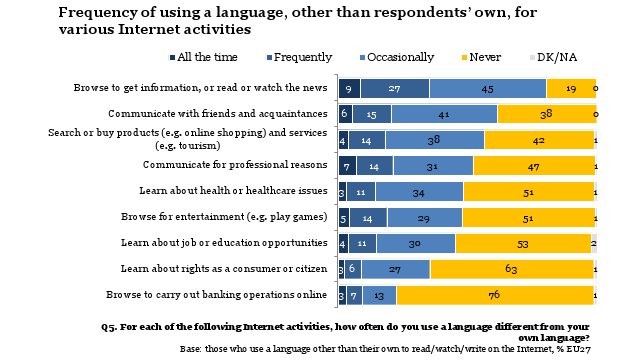
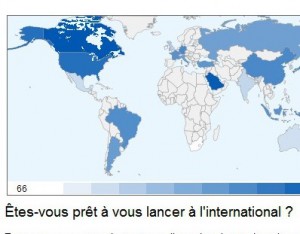
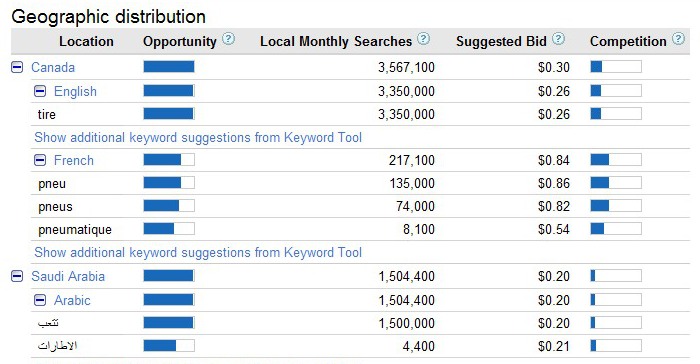
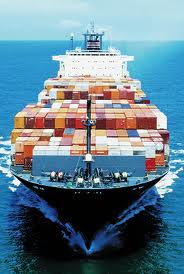 As the internet economy keeps on growing in a difficult economic outlook, business owners have the opportunity to search for new customers beyond their national frontiers. The easy access to websites have made the consumers in Europe, Asia, the Middle East, and South America a potential goldmine for marketers. The targeting of local consumers has become a major objective for most export oriented companies. While Google is indisputably the number one channel for search, and to generate sales leads, there are many other ways of searching on the internet.The emergence of social medias is starting to challenge the domination of the search market by Google. This market dynamic has given rise to internet marketing strategies like
As the internet economy keeps on growing in a difficult economic outlook, business owners have the opportunity to search for new customers beyond their national frontiers. The easy access to websites have made the consumers in Europe, Asia, the Middle East, and South America a potential goldmine for marketers. The targeting of local consumers has become a major objective for most export oriented companies. While Google is indisputably the number one channel for search, and to generate sales leads, there are many other ways of searching on the internet.The emergence of social medias is starting to challenge the domination of the search market by Google. This market dynamic has given rise to internet marketing strategies like